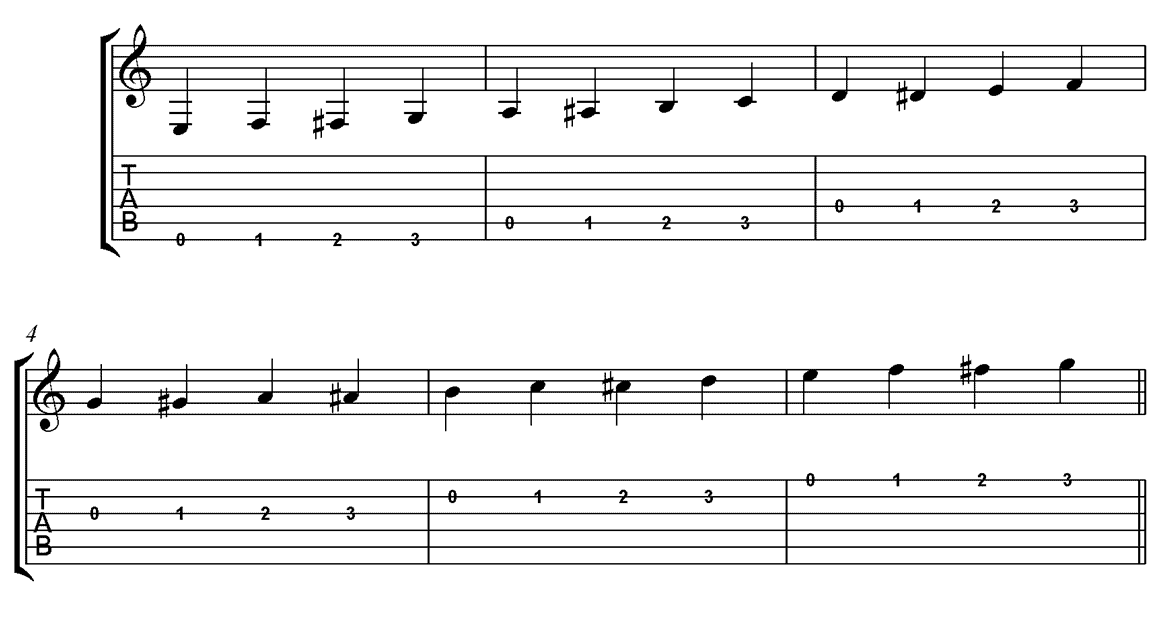Getting notes that buzz on your guitar can be very annoying! Chances are if you’re new to guitar you have had or currently have this issue. Go fret a chord, strum the strings, and one or more of the notes buzz (if they make a sound at all!).
Buzzing in general can come from a number of different issues. But getting buzzing when you’re playing chords is caused by just one thing. Let’s take a closer look and you’ll see what I mean.
Why Does My Guitar Buzz?
When you press down on a string to fret a note, the string is also being pressed down on the fret. The frets are the vertical metal pieces on your fretboard. When your string makes contact with the right amount of pressure, the note rings out clearly. But if you don’t press down quite hard enough it’s not making full contact with the fret. This partial contact causes the strings to buzz. Pressing too hard is less common, but it can cause the note to go out of tune.



This might be a lot to think about on top of just trying to learn how to fret the chord in general, and change between chords. But proper fretting is the key to beautiful sounding chords. The idea is to get your finger as close to the fret as possible without being on top of it. The ideal spot is just behind the fret. If you fret the note on the fret then your finger will actually deaden the note. If you find that sweet spot you actually don’t have to fret as hard!
Now, you might be thinking to yourself that when you play some chords it’s physically impossible to get all of your fingers right up to the fret. You’ll find that there’s a range where you can fret so the notes will ring. You can try this now. Fret a note, any note, right behind the fret. Now, move your finger away from the fret and see just how far you can go before the note starts to buzz.
This sounds like a lot, but with a little bit of practice it will quickly become second nature. Or at the very least way easier.
How To Play Notes Without Buzzing
I have two simple exercises that will get you playing notes and chords without buzzing. I know that exercises can get a bad rap. You started to learn guitar so you can play songs, not play exercises! And I know a lot of exercises can be boring and repetitive. But I can tell you from my own experience in my guitar journey, as well as teaching hundreds of students over the years, that by learning and practicing a few strategic exercises you can make playing guitar a lot more fun. Sound good?
Exercise #1
You might think that practicing the chords until they sound good is the best method, but it will actually take you longer to play the chord. And you might develop a bad habit or two along the way that you’d have to undo later. This first exercise is called a finger developer. The idea is to play one note at a time, and to pay special attention to your finger placement and how much pressure you’re using.
You’ll start by playing an open string, then the 1st fret, 2nd fret, and then 3rd fret. Just play one note at a time, nice and slow. If this is enough of a challenge then just play this on the 6th string. If that feels good you can add additional strings one at a time. Open, 1st, 2nd, and 3rd frets.

Play the 1st fret with your index finger, 2nd fret with your middle finger, and 3rd fret with your ring finger. Start slow and once you’re comfortable you can speed it up. Just keep in mind that this isn’t a speed building exercise at this point. It certainly can be, but right now it’s designed to get you comfortable with where to fret.
Exercise #2
The second exercise is a chord exercise. Use the same fretting concept as the first exercise to get these notes to ring out.
You'll find a complete video lesson here: Secret to Learning Guitar Chords Fast
Is It Me Or My Guitar?
It’s common for students to naturally think there’s an issue with their guitar when they get buzzing, but 9 times out of 10 it’s their technique that needs adjusting. That said, a well adjusted (or “set up”) guitar is important. This is best done by taking your guitar to a qualified guitar technician. The process includes adjusting your truss rod (the support rod in the neck), lowering or raising your string height, and sometimes adjusting your nut or bridge saddle.
If you’re a handy person you can do much of this yourself. There are a ton of videos on YouTube that will walk you through the process of a basic set up.
So try these exercises and really focus on the technique of proper fretting. Adjust your hand or fingers as you need to until you get beautiful sounding chords that ring out clearly. If you want more lessons like this, and want to learn more useful exercises, songs, and much much more, check out my membership Real Guitar Success. I have hundreds of hours of encouraging and uplifting lessons.
